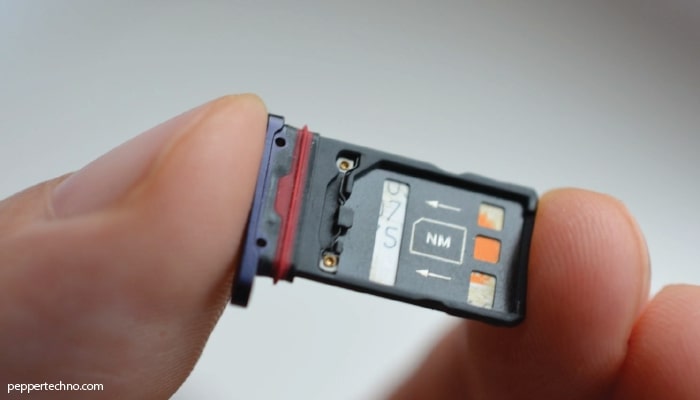What does dual carrier mean in technology?
In today’s fast-paced world, where connectivity is crucial, understanding the technology behind data transmission is essential. One such technology that has revolutionized the way we communicate is dual carrier technology. Dual carrier technology is a method of combining two carriers to increase data speeds and improve network performance. In this article, we will delve into the basics of dual carrier technology, how it works, its advantages, and its impact on various industries.
Understanding the Basics of Dual Carrier
Dual carrier technology, also known as carrier aggregation, is a technique used in telecommunications to increase data speeds and improve network performance. It involves combining two carriers, or frequency bands, to transmit data simultaneously. This allows for higher data rates and improved network capacity.
Unlike single carrier technology, which uses only one carrier to transmit data, dual carrier technology utilizes multiple carriers. By combining two carriers, the available bandwidth is increased, resulting in faster data speeds and improved network performance.
Carrier aggregation is a critical component of dual carrier technology. It enables the simultaneous use of multiple carriers by dividing the data into smaller parts and transmitting them over different frequency bands. This technique allows for efficient utilization of available spectrum and maximizes the data throughput.
How Dual Carrier Technology Works
Dual carrier technology works by combining two carriers to increase data speeds and improve network performance. The process involves several technical steps.
Firstly, the device or base station scans the available frequency bands to identify suitable carriers for aggregation. Once the carriers are identified, they are synchronized to ensure seamless transmission.
Next, the data to be transmitted is divided into smaller parts and assigned to different carriers. This process is known as packet scheduling. Each carrier then transmits its assigned packets simultaneously.
At the receiving end, the device or base station combines the received packets from each carrier to reconstruct the original data. This process is known as packet reassembly.
Dual carrier technology is used in various industries to enhance data transmission. For example, in the telecommunications industry, it is used to improve network capacity and provide faster data speeds to mobile devices. In the automotive industry, it is used to enable high-speed data transfer in connected cars. In the healthcare industry, it is used to transmit large medical files quickly and securely.
Advantages of Dual Carrier Technology
Dual carrier technology offers several advantages over single carrier technology.
One of the primary advantages is increased data speeds and bandwidth. By combining two carriers, the available bandwidth is doubled, resulting in faster data transmission. This is particularly beneficial in areas with high data traffic, where single carrier technology may struggle to provide adequate speeds.
Another advantage is improved network coverage and reliability. Dual carrier technology allows for better utilization of available spectrum, which leads to improved network coverage. Additionally, by using multiple carriers, the network becomes more resilient to interference and congestion, resulting in a more reliable connection.
Furthermore, dual carrier technology provides a better user experience for mobile devices and IoT devices. With faster data speeds and improved network performance, users can enjoy seamless streaming, faster downloads, and smoother browsing. IoT devices, such as smart home devices and wearables, can also benefit from dual carrier technology by enabling faster and more reliable data transfer.
Dual Carrier vs Single Carrier Technology
While dual carrier technology offers several advantages, it is essential to understand how it compares to single carrier technology.
Single carrier technology uses only one carrier to transmit data. While it may be simpler to implement and manage, it has limitations in terms of data speeds and network capacity. Single carrier technology may struggle to provide adequate speeds in areas with high data traffic.
On the other hand, dual carrier technology utilizes multiple carriers to increase data speeds and improve network performance. By combining two carriers, it can provide faster data transmission and better network coverage. However, dual carrier technology may require more complex infrastructure and devices capable of supporting carrier aggregation.
Both technologies have their advantages and disadvantages, and the choice between them depends on the specific requirements and constraints of the application.
Dual Carrier in 4G and 5G Networks
Dual carrier technology is used in both 4G and 5G networks to enhance data transmission.
In 4G networks, dual carrier technology is used to increase data speeds and improve network capacity. By combining two carriers, it can provide faster download and upload speeds, enabling seamless streaming, faster downloads, and smoother browsing. Dual carrier technology is particularly beneficial in areas with high data traffic, where single carrier technology may struggle to provide adequate speeds.
In 5G networks, dual carrier technology is used to further enhance data transmission. With the introduction of higher frequency bands in 5G, carrier aggregation becomes even more critical. By combining multiple carriers across different frequency bands, 5G networks can achieve even faster data speeds and improved network performance. This is essential for supporting emerging technologies such as autonomous vehicles, virtual reality, and the Internet of Things.
Dual Carrier in Mobile Devices
Dual carrier technology is widely used in mobile devices to provide faster data speeds and improved network performance.
Many modern smartphones and tablets support dual carrier technology, allowing users to benefit from faster download and upload speeds. This enables seamless streaming of high-definition videos, faster downloads of large files, and smoother browsing.
Mobile network operators also utilize dual carrier technology to enhance their network capacity and provide better coverage. By implementing carrier aggregation, they can efficiently utilize available spectrum and maximize the data throughput. This results in a better user experience for their customers.
Dual Carrier in Internet of Things (IoT)
Dual carrier technology is also used in IoT devices to enable faster and more reliable data transfer.
IoT devices, such as smart home devices, wearables, and industrial sensors, rely on fast and reliable data transmission to function effectively. Dual carrier technology allows for faster data speeds and improved network performance, ensuring seamless connectivity for IoT devices.
For example, in smart home applications, dual carrier technology enables quick and secure transmission of data between devices. This allows for real-time monitoring and control of various home automation systems, such as lighting, security, and energy management.
In industrial applications, dual carrier technology enables high-speed data transfer in connected factories and warehouses. This is crucial for real-time monitoring and control of production processes, inventory management, and predictive maintenance.
Future of Dual Carrier Technology
The future of dual carrier technology looks promising, with potential advancements and improvements on the horizon.
One area of development is the implementation of higher-order carrier aggregation. Currently, dual carrier technology combines two carriers, but future advancements may allow for the aggregation of three or more carriers. This would further increase data speeds and improve network performance.
Another area of development is the integration of dual carrier technology with other emerging technologies, such as edge computing and artificial intelligence. By combining these technologies, it may be possible to optimize network performance and provide personalized services based on user preferences and behavior.
Furthermore, as 5G networks continue to roll out globally, dual carrier technology will play a crucial role in maximizing the potential of these networks. With higher frequency bands and increased network capacity, carrier aggregation will be essential for achieving the promised speeds and low latency of 5G.
Conclusion: Dual Carrier Technology and its Impact on the Industry
In conclusion, dual carrier technology is a critical component of modern telecommunications networks. By combining two carriers, it enables faster data speeds, improved network coverage, and a better user experience for mobile devices and IoT devices.
Understanding dual carrier technology is essential in today’s world, where connectivity is crucial. It has a significant impact on various industries, including telecommunications, automotive, healthcare, and more. With advancements in technology and the rollout of 5G networks, dual carrier technology will continue to evolve and shape the future of connectivity.
As we move forward, it is important for industry professionals and consumers alike to stay informed about the latest developments in dual carrier technology. By understanding its capabilities and potential, we can fully leverage its benefits and drive innovation in our increasingly connected world.




